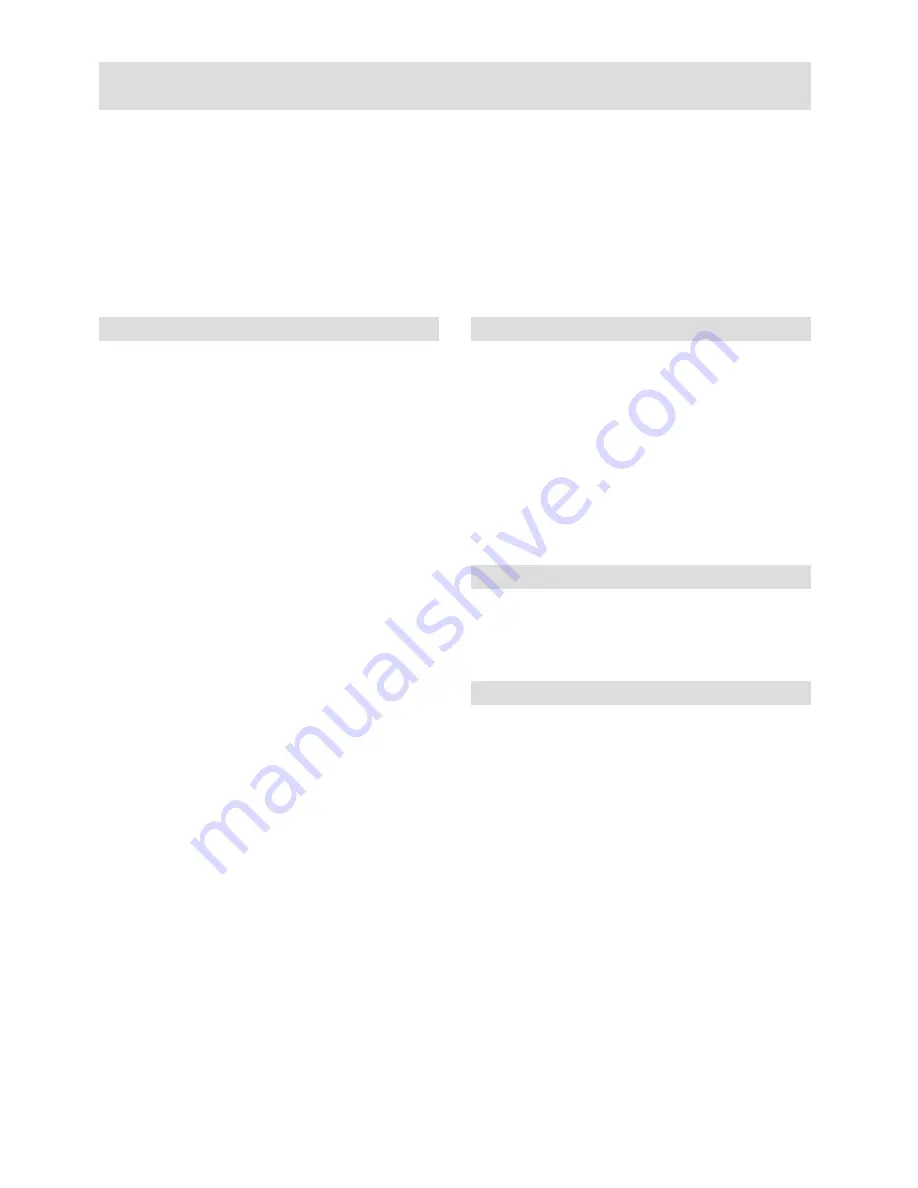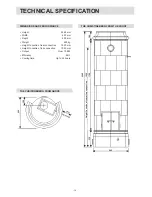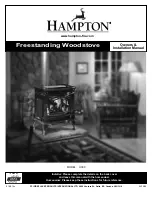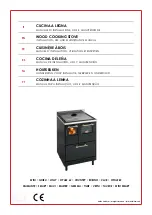
CARE & FIRING INSTRUCTIONS
The Christineberg has been tested by the Swedish National Testing and Research Institute.
The test results show a
very pure combustion and a useful efficiency of not less than 86%.
Both the useful efficiency and the environmental results make the Christineberg directly comparable with the best
optimised heating boilers on the market.
For the Christineberg to work optimally and to give you the maximum return, it is of the greatest importance that you
follow the care and firing instructions below.
Non-compliance will invalidate the warranty.
- 14 -
FIRING
It is important to fire with the right amount of wood in the
tile stove; otherwise, there is a risk of overheating resulting
in damage to the stove and chimney. The wood amounts
stated below are for firing with hardwood.
At maximum firing for longer periods of time the stove's
service life is reduced and, if the maximum permitted
amount of wood is exceeded, the tile stove and the chim
-
ney may be damaged.
Suitable firewood size and quantity for the Christineberg
are, as follows:
Kindling
Length
approx. 30 cm
Diameter
2 - 5 cm
Amount
approx. 1.7 kg
Split logs
Length
approx. 30 cm
Diameter
6 - 10 cm
Amount
approx. 1.7 kg per load
Maximum amount
2.5 kg per hour
To see how much space 1.7 kg of kindling and 1.7 kg of
split logs occupy, it is a good idea to weigh the wood be
-
fore the first couple of firings. This will gradually become
routine, and weighing will become unnecessary.
However, pay attention if the wood suddenly feels abnor
-
mally heavy. This may be caused by too high a moisture
content, which will necessitate additional drying.
FUEL
The Christineberg must to be fired with wood. Most
types of firewood can be used. The most suitable ones
are birch, beech, ash, and elm, but conifers and oak can
also be used if they are mixed 50/50 with another type
of hardwood. Oak contains acids, which may affect the
materials in the stove during combustion.
Coal and briquettes are unsuitable fuels. They develop
high temperatures, which may damage the hearth.
The firewood must be dry, i.e. with a maximum moisture
content of 15 to 20%. If the firewood is moist, an unnec
-
essary amount of energy is used to dry it before it starts
burning normally. Moreover, this forms large amounts
of soot and tar, which are deposited on the walls of the
hearth and chimney, which in turn significantly increases
the risk of a chimney fire.
Moist firewood also results in poor combustion, which
leads to greater smoke generation with sooty glass and
deterioration of the local environment as a consequence.
To be certain that you will have dry wood when the heating
season begins, the wood should be cut in the winter. The
wood is then stored in a ventilated place under a roof and
left to dry during the spring and summer. Before using
the wood, you should keep it indoors for a couple of days
so there is time for the surface moisture to evaporate.
WARNING!
It is absolutely forbidden to fire the stove with
painted, glued (e.g. chipboard or hardboard), or pressure-
impregnated wood.
It is also forbidden to burn plastic and other waste in the
tile stove. The combustion of such fuels and substances
releases acids and heavy metals, which are very harmful
to the environment.
Summary of Contents for Christineberg
Page 1: ...Christineberg Installation Instructions Care and firing instructions ...
Page 19: ......
Page 20: ...01 03 2012 www keddy se ...





































